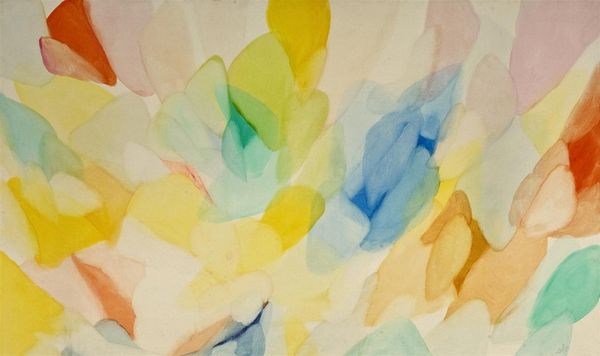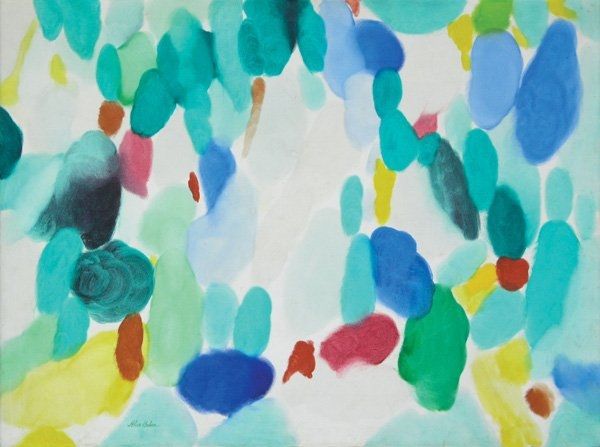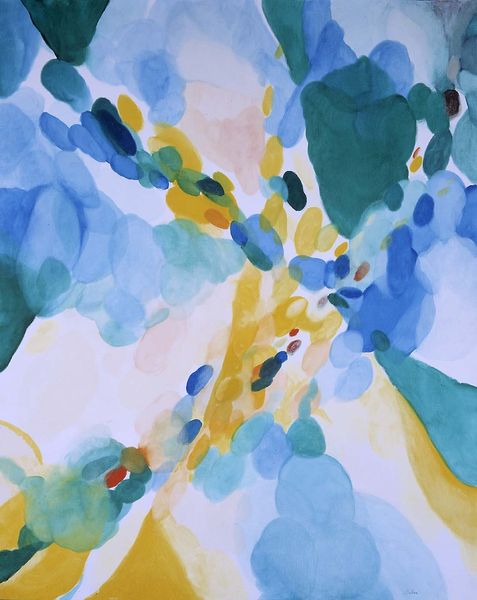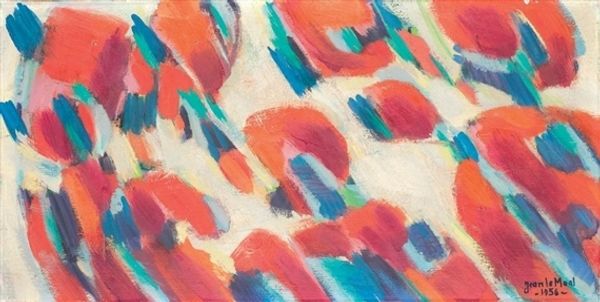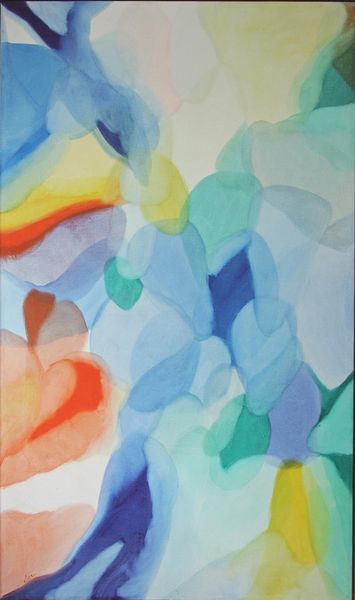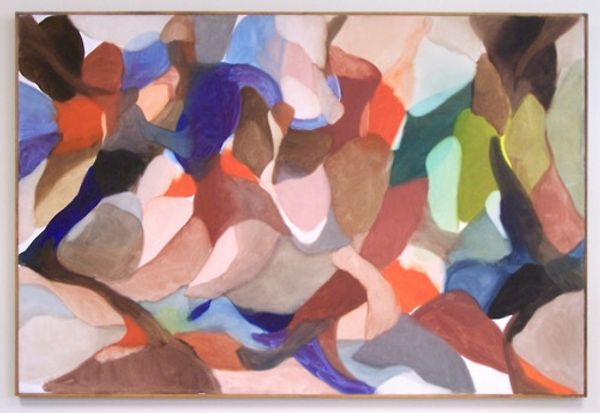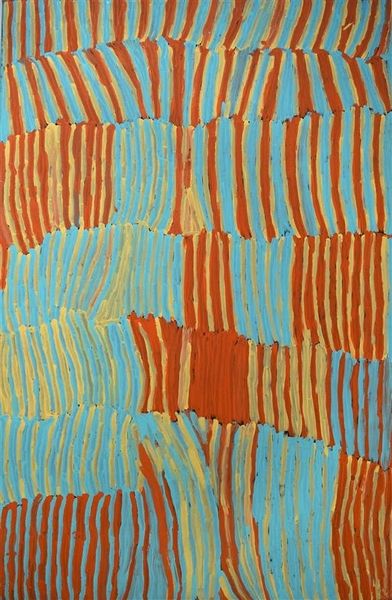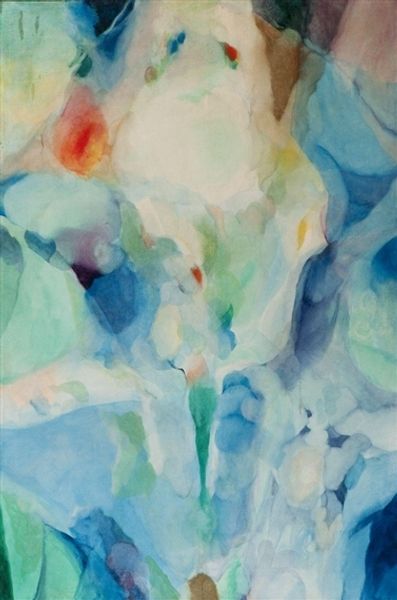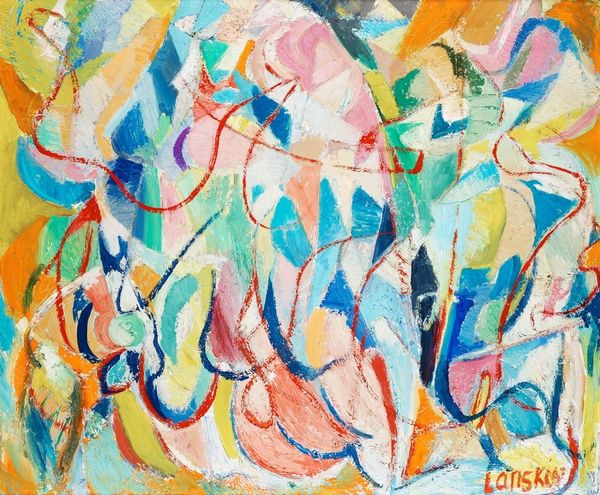
Copyright: Alice Baber,Fair Use
Alice Baber's "The Way of the Wind" is an abstract oil on canvas that invites us to consider the politics of imagery in post-war America. Created during a period of significant social change, Baber's art moved against the dominant currents of a male-dominated art world. Her use of flowing shapes and vibrant colors, eschewing rigid forms, can be seen as a subtle rebellion against the traditional art institutions that favored masculine, hard-edged abstraction. The very act of a woman creating such bold, expansive work challenged the prevailing gender norms within the art world and broader society. To fully understand "The Way of the Wind," we would need to delve into the archives of the galleries and museums that exhibited Baber's work, examining the critical reception and the social networks that supported or hindered her career. Through such historical research, we can better appreciate how art both reflects and shapes the social conditions of its time.
Comments
No comments
Be the first to comment and join the conversation on the ultimate creative platform.
